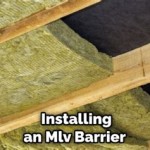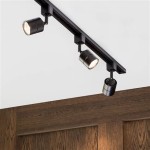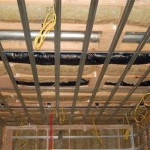R-Value for Ceiling Insulation
Ceiling insulation is a crucial aspect of maintaining a comfortable and energy-efficient home. The R-value of insulation measures its resistance to heat flow, indicating its effectiveness in preventing heat loss or gain through the ceiling. Understanding the R-value and choosing the right insulation material are essential for optimizing home comfort and reducing energy costs.
The R-value is expressed in units of feet squared per hour per degree Fahrenheit (ft2·h·°F/Btu). A higher R-value indicates greater resistance to heat flow. For instance, an insulation with an R-value of 19 means it takes 19 ft2·h to transfer one British thermal unit (Btu) of heat through one square foot of the insulation at a temperature difference of one degree Fahrenheit.
The recommended R-value for ceiling insulation varies depending on the climate zone. Colder regions require higher R-values to minimize heat loss during winter, while warmer climates may need lower R-values to prevent excessive heat gain during summer. The International Residential Code (IRC) provides minimum R-value recommendations based on climate zones.
In northern climate zones, R-values of 49 to 60 are recommended for attics and cathedral ceilings. These higher R-values help retain heat within the home, reducing heating costs. In southern climate zones, R-values of 30 to 49 are generally adequate for attics and cathedral ceilings, as the primary concern is preventing heat gain.
Various insulation materials offer different R-values per inch of thickness. For example, fiberglass batts typically have R-values ranging from 2.2 to 3.8 per inch, while cellulose insulation can have R-values between 3.2 and 3.8 per inch. Spray foam insulation, though more expensive, provides superior insulation performance with R-values ranging from 6.0 to 6.8 per inch.
Proper installation of ceiling insulation is crucial to ensure its effectiveness. Insulation should be installed snugly between ceiling joists, without any gaps or air leaks. Adequate ventilation must also be provided to prevent moisture accumulation and mold growth. IRC specifies minimum ventilation requirements for attic spaces to ensure proper airflow.
Choosing the right R-value for ceiling insulation and ensuring proper installation can significantly enhance home comfort and energy efficiency. By reducing heat loss and gain, adequate insulation can lower heating and cooling costs, contribute to a more stable indoor temperature, and improve the overall living environment.

What R Value Do I Need Johns Manville

Recommended Insulation Levels For Optimum R Value

Attic Insulation How Much Do I Need

What Is The Highest R Value Insulation Ratings Types Charts

Attic Insulation How Much Do I Need

What Is R Value Ecomaster

R Value Uncovered A Fun Exploration Of Insulation Secrets Q4 2024 Infographic

The Importance Of Insulation R Values Eco Spray

Ceiling Insulation Value

Insulation Levels For Cold Hot And Moderate Climates








